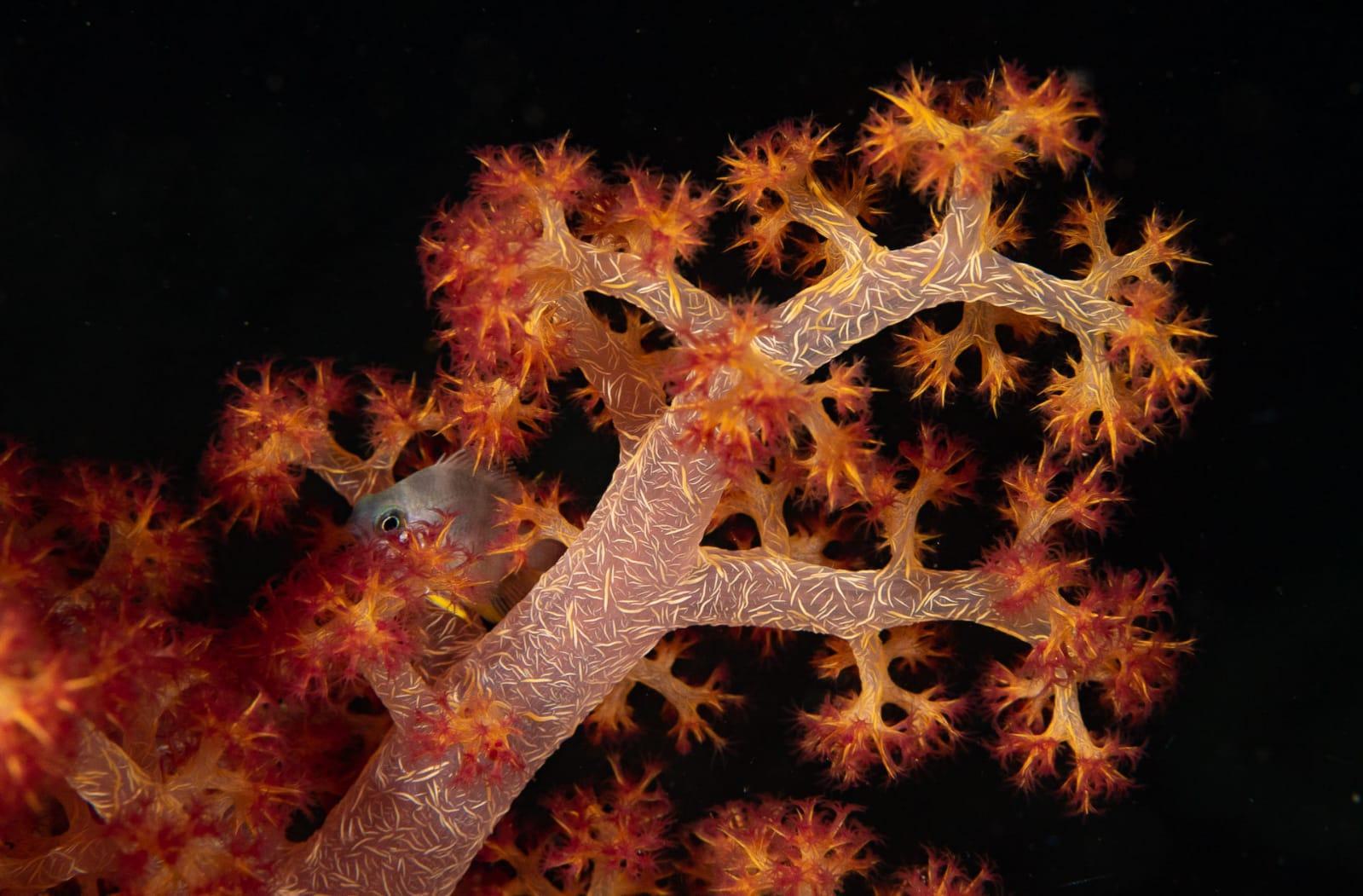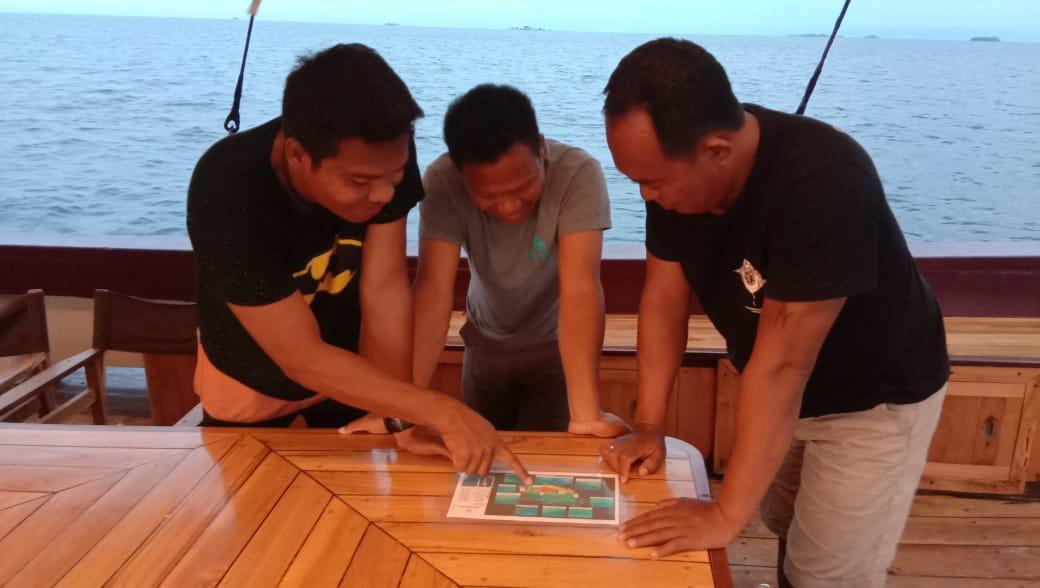
Regenerating the Reef
To catch the natural phenomenon of coral spawning, you need a lot of patience, a measure of science and a sprinkle of luck
On the 7th of November, our team based in Indonesia alongside out media partners, IndoPacific Films established a base at the Island of Bontosua for ten days with the hope of documenting coral spawning on the Salisi’ Besar reef. To provide an insight into this magic, this article will give you a behind the scenes insight into capturing one of the most beautiful biological events on Earth – coral spawning. Time to hand over to Mike Veitch, photographer and videographer at IndoPacific films to share his diary style log of the experience...
Background
Our home at Bontosua for the week is a beautiful traditional Indonesian Phinisi boat called “Pinisi Pusaka Indonesia”.

A traditional Indonesian Phinisi boat
The goal of the project is to film the coral spawning event. This is an annual occurrence when many of the hard corals on the reef release their gametes at the same time. Coral spawning typically only happens for a few nights each year and is therefore a special event to witness. This phenomenon has not been observed before at Salisi’ Besar so we are excited to learn if it will happen. In order to capture this event our team is spending their nights diving on the reef. Regardless of if the spawning happens or not, this is the first time we have been able to dive at night on HOPE Reef and we are looking forward to it with much anticipation!
Day 1 - November 7th
Boarded the Phinisi Pusaka Indonesia with our 10 boxes of gear and ready to sail out to Bontosua. It's a two-hour journey to the island and we spend the time getting gear ready and settling into our rooms. We did a night dive tonight to check out the action on the reef and see the conditions underwater. As expected, the polyps of the hard corals look great at night. We didn’t see any spawning activity, but the dives were excellent with good conditions and warm water.
Day 2 - November 8th
We took advantage of a beautiful morning to get in the water and check out HOPE reef during the day. The coral was looking great, and we ran into a couple of shy cuttlefish who didn’t want their picture taken. After the morning dives and lunch, it was time to charge batteries and set up cameras for the night to come. We are rolling the members of the team in shifts from 6pm to 12am looking for signs of coral spawn. Tonight, is a full moon so it's possible that the coral can start spawning at any time. We didn’t see any tonight, but we did encounter another cuttlefish who was a lot more cooperative. No worries, we have another 10 nights to go on location.

The team planning the upcoming night dive
Day 3 - November 9th
The morning is low tide, so we decided to dive the deeper sections of Salisi’ Besar where the visibility is a little better. We also tagged along with the Mars Sustainable Solutions team to film and photograph them at work on the reef. This week they are conducting maintenance and monitoring of the corals. Once again, we started the night at 6pm and spent 5 hours underwater watching for coral action. We haven’t seen any spawning yet, but we are still finding some cool critters. Highlights of the night dives included scorpion fish, bobtail squid, and plenty of crabs.
Day 4 - November 10th
An early start to the day, 7am in the water to capture clear water before low tide. The goal of the morning was to take scenic photographs of Hope Reef. On the second dive we joined the Mars team to shoot photos and video of their monitoring activity. Hopes are high for coral spawning this evening. However, the night proves to not have any spawning activity. The night dives themselves are outstanding with some amazing encounters including coral cat sharks and a large cuttlefish that captured and ate a rabbit fish!
Day 5 - November 11th
Today we had our first official Spawning activity! We spent the night diving at Salisi' Besar reef system. In total we found three different coral heads releasing gametes into the water column. The corals that we spotted were of the natural variety and beside the reef stars. Although the corals themselves were not on the reef stars it was exciting to find that we have the moon phase correct and that the corals are starting to spawn!
Day 6 - November 12th
We started off the day at the "Science Blocks" and as luck would have it Block 3 was like a miniature "Sardine Run". There were thousands of small bait fish swarming around the reef as they were being herded and preyed upon by a school of trevally. At night we spent 5 hours on Salisi' Besar and were lucky to find 4 different species of coral spawning throughout the night!

A miniature "sardine run"
Day 7 - November 13th
Tonight, we visited the "Science Blocks" hoping for more coral spawning activity. Although there was no "mass spawning" sighted, we did observe at least a dozen different coral heads all spawning over a 2-hour period. As observed yesterday, these were all stony corals and were not corals from "reef stars" but instead are older stony corals.
The first-time coral spawning has been captured on Salisi' Besar
Day 8 - November 14th
We spent the morning diving at Hope Reef collecting footage and photographs including 360. In the afternoon we visited the local sandbank to shoot time-lapse of the clouds and capture some drone footage. At 6pm we headed out to Science Block 1, the oldest "reef star" colony at Bontosua. Unfortunately, there was no real spawning action tonight except one short "smoking" stony coral. Great encounters with other marine life though including hermit crabs, squid, and a cooperative cuttlefish.
Day 9 - November 15th
We spent the morning diving at Salisi' Besar as well as the science blocks. Weather is turning a little bit today, wind coming more from the west and larger waves coming in.
Day 10 - November 16th
We spent the day filming a Reef Star build as the MARRS team was training members of the National Park Service on Reef Star installation. In the evening we checked out two different reef systems and encountered a great variety of critters including stone fish, lionfish, cuttlefish, crabs, stingrays and a whole lot more!

A Reef Star Build in Indonesia
Day 11 - November 17th
Our last day at Bontosua, we spent the daytime diving the reefs of Salisi Kecil and the Science Blocks area. A plethora of creatures were found including white tip sharks and both green and hawksbill turtles. In the evening we had our best sunset of the week and much better weather than the two previous evenings. This allowed us to spend the last night diving at Salisi' Besar, Hope Reef. We found some fantastic critters including a juvenile coral cat shark, a starry night octopus and as a parting gift one last coral head released its gametes. We didn't see any other spawning activity; it was as if this final one was waiting for us to say goodbye!

The final sunset
The spawning of coral reefs across Salisi’ Besar represents a world first moment and provides vital bundles of hope for the future of the reef. Team MSS Indonesia will continue to monitor the progress of these wonderful coral babies and hopefully start to see them growing across Salisi’ Besar. Coral spawning is a natural phenomenon occurring at reefs all over the world, including the Great Barrier Reef. Our media team, Biopixel has been working through the night to capture spawning at Moore Reef, whilst our partners at the Reef Cooperative have been setting up ‘Coral Spawn Pools’ in Gunggandji Sea Country. These pools captured several million bundles of coral spawn which will be transferred to Hastings Reef in Yirrganydji Sea Country to boost coral recruit numbers! The ability of coral reef ecosystems to recover from local and global stressors relies on the success of these coral spawning events and on advances in laboratory and in-situ research to generate new options to enhance reef resilience.


